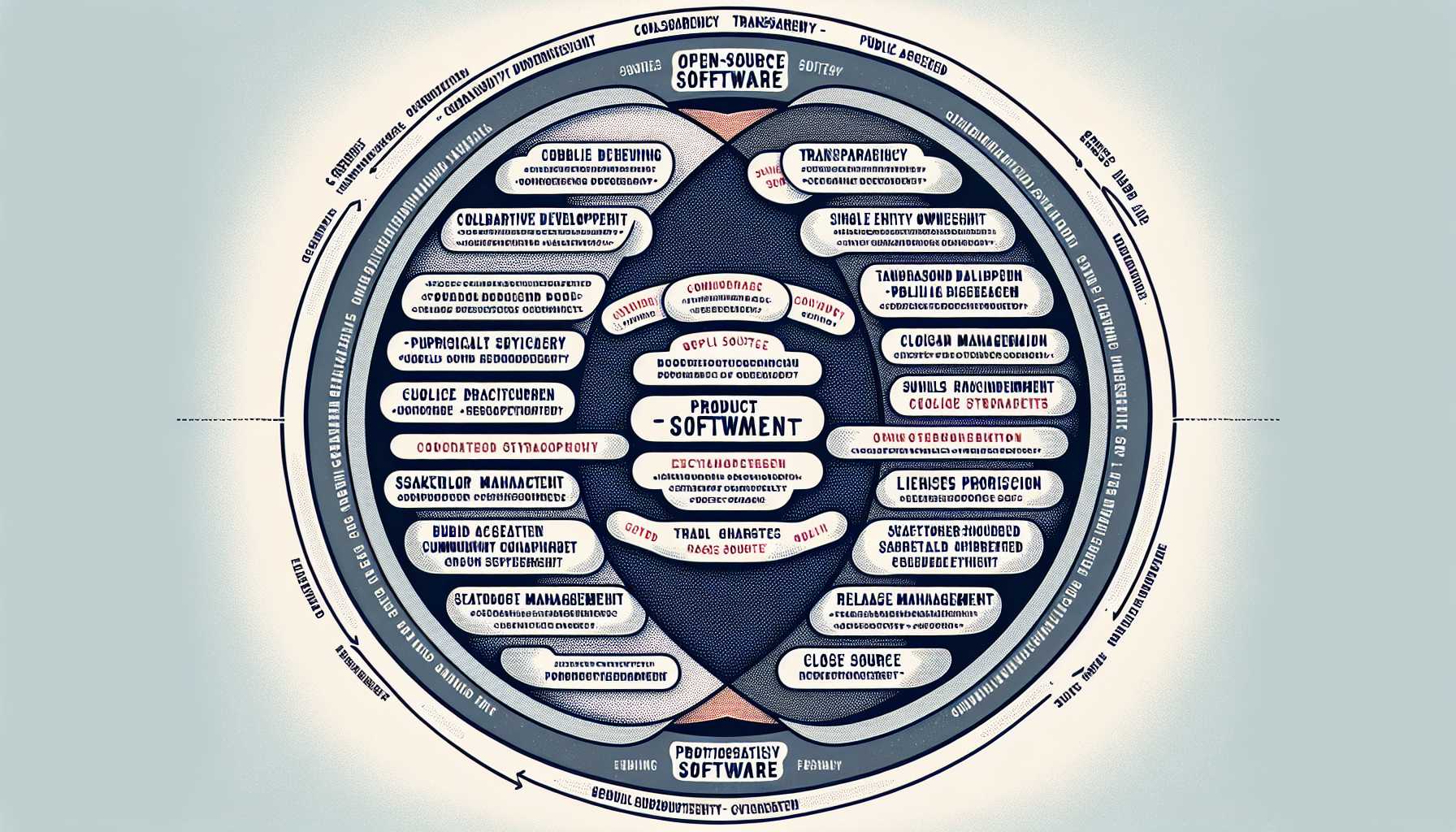Product Management in Open-Source vs. Proprietary Software: A Deep Dive
The software development landscape is vast and varied, with the debate between open-source and proprietary software models taking center stage. As a seasoned product manager, I’ve navigated both realms, and the differences in product management across the two are as compelling as they are complex.
The Core Distinctions
At a high level, the most evident contrast between managing open-source and proprietary software revolves around the nature of ownership and control. Open-source software (OSS) is freely available for use, modification, and distribution. In contrast, proprietary software is licensed, restricted in access, and closed to external modification.
Community Building and Engagement
In OSS, community engagement is paramount. The active community serves both as a boon and a challenge. The collective intelligence drives innovation, but aligning contributions with the product’s vision requires careful moderation and leadership. The OSS community aspect demands skills in community management, transparency in decision-making, and an inclusive approach to roadmap planning.
Business Models and Monetization
Monetization strategies differ significantly. Proprietary products typically derive revenue through direct sales, subscriptions, or licensing fees. OSS, meanwhile, demands creative avenues such as support services, premium versions (freemium models), or partnerships. Crafting sustainable business models without compromising open-source principles is a challenge and a thrilling puzzle to solve.
Intellectual Property and Licensing
Understanding intellectual property rights is crucial. In proprietary settings, safeguarding intellectual property is a cornerstone of product strategy. OSS requires navigating diverse licensing models, from permissive licenses like MIT and Apache to copyleft licenses like GPL. Choosing the right license is critical in balancing user freedoms with safeguarding against proprietary forks.
Product Roadmap and Control
The roadmap in proprietary software is typically more controlled and predictable, in alignment with the company’s strategic objectives. In contrast, OSS roadmaps can be more fluid, influenced by community input and contributions. OSS product managers must balance community desires with strategic business outcomes.
Quality Assurance and Testing
Quality assurance methods also diverge. Proprietary products often have dedicated QA teams that test in controlled environments. OSS benefits from community testing and the “many-eyes” hypothesis, where widespread usage and scrutiny by the community helps identify and rectify issues. However, the diversity of environments in which OSS operates can make thorough testing a formidable task.
Support and Documentation
In proprietary models, customer support is a service often monetized and controlled. OSS projects demand robust documentation and require leveraging community platforms for user support. Enhancing documentation for an OSS product can dramatically reduce support overhead and uplift the user experience.
Security Considerations
Security practices are another area of differentiation. The OSS belief is that open code bases undergo more rigorous and transparent security vetting. However, maintaining security in an environment where code is publicly accessible requires diligent vulnerability management and community collaboration.
Market Strategy and Positioning
Market strategy and positioning can greatly vary. Proprietary products often compete on features, exclusivity, and service. OSS products, by contrast, focus more on community trust, brand reputation, and collective advancements. Building a brand that resonates with values of openness and collaboration is crucial.
Conclusion
Navigating product management in open-source and proprietary settings requires acknowledging and adeptly managing their differences. While both models have their unique challenges and advantages, each has offered me invaluable insights into the multifaceted world of software product management.
Understanding these differences is vital not only for current product managers but also for organizations considering a transition between these models. With the OSS community growing and proprietary software embracing elements of open development, the lines might blur, but the foundational elements that differentiate them will remain.
The agility to adapt and the wisdom to leverage the strengths of each model is the hallmark of a seasoned product manager. It is a journey not without its trials, but one that is rich with rewards and the potential for profound impact on the software industry.

